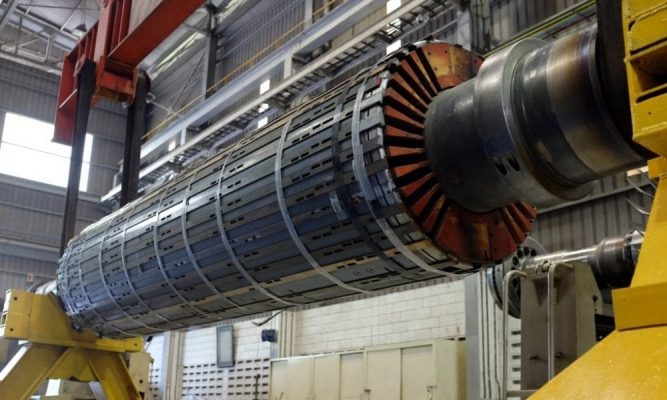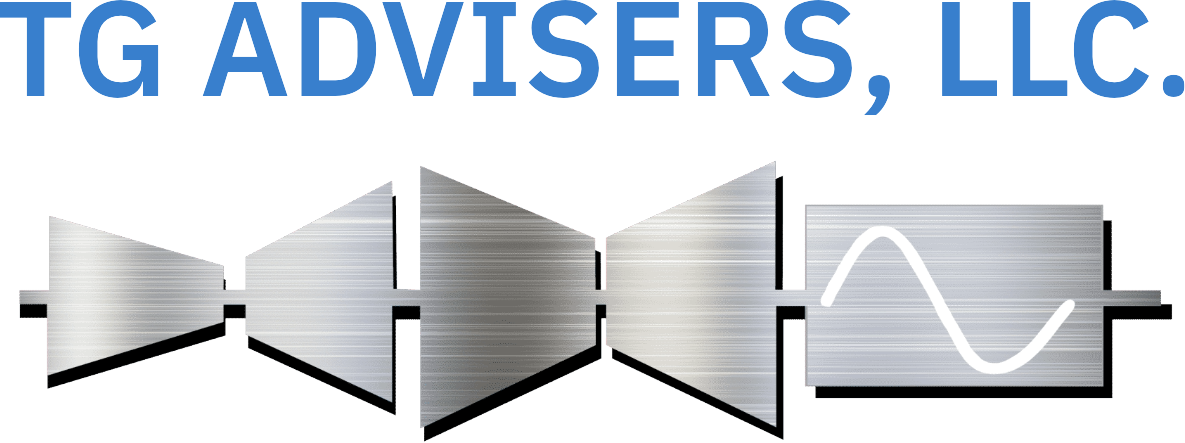Generator Boresonic Inspection Interval Extension
Client Request: Evaluate the risk level associated with postponing a boresonic inspection of their generator field beyond OEM recommendations. OEM guidelines specified reinspection of the field bore after a specific number of operating years. The plant had already exceeded the year limit.
Analysis Completed: TG Advisers first looked at the operating history of the unit since the last boresonic test, to determine the total number of stop/start cycles and overspeed test events. Crack growth in the bore of a field is primarily driven through Low Cycle Fatigue (LCF), which is associated with stop/start cycling of the unit, as well as unit overspeed events, including overspeed testing. Potential crack growth rates for any flaws in the bore can then be calculated using these cycle and event numbers. Conservative assumptions were also made for the cycles and overspeed events from current day through the projected next inspection date.
A simple Finite Element Analysis (FEA) model of the field was created using a field body shipping drawing provided by the plant. Slot dimensions were included in the field body section as well. Material properties of the specific rotor material were taken into account. Initial crack sizes were determined from the results of the last boresonic. The real flaws that existed at that time point were utilized as the initial crack sizes for fracture mechanics calculations.
When considering turbine or generator rotor boresonic test results, flaws at the surface of the bore are of greatest concern, as these flaws are on a free surface where crack growth rates are highest. Stress levels in a field, specifically hoop stresses present from the rotation of the rotor, are highest at the bore surface. Larger diameter sections typically have the greatest stress levels as well due to the additional mass, though the field body section is more complicated due to the presence of winding slots.
The FEA model output the stress present at the location of every existing flaw in the rotor. These stress magnitudes were then used in a linear fracture mechanics analysis, where an initial flaw size was assumed, and the actual mechanical properties of the metal were used to determine the remaining cycles and overspeed events before the cracks present in the rotor could reach critical size. A safety factor was also applied to the critical crack size in these calculations per typical OEM practices. Critical crack sizes were compared to the actual rotor geometry to ensure the calculated values made sense from a physical standpoint.
Analysis Findings: The results of the fracture mechanics analysis showed that the risk of delaying the boresonic inspection for multiple years was low. Per the actual cycle and overspeed event data from the plant, if a boresonic inspection was carried out immediately, there would have been little to no difference in flaw size from the previous inspection 10+ years prior, as the unit had minimal cyclic behavior.
Based on the analysis outcome, TGA provided the plant with specific numbers for allowable total overspeed events and normal stop/start cycles the unit could undergo until the next boresonic would be carried out.
Improvements: The analysis carried out allowed the plant to reach the next planned major outage, and perform the boresonic reinspection as part of that planned outage scope.
To date, there has been no issues with the field.
Best Practice: When looking to defer maintenance on your unit, whether a turbine or generator, the decision should be based off of sound engineering analysis. Wherever possible, calculations should be used to assess the risk level of extending the operational interval. In the case of boresonic inspections, the failure mode is well known and established. Often the provided re-inspection intervals are generic. Performing a one-off evaluation of your specific rotor may be able to extend the interval between boresonic inspections, once the flaws of your specific rotor are applied to the analysis.


